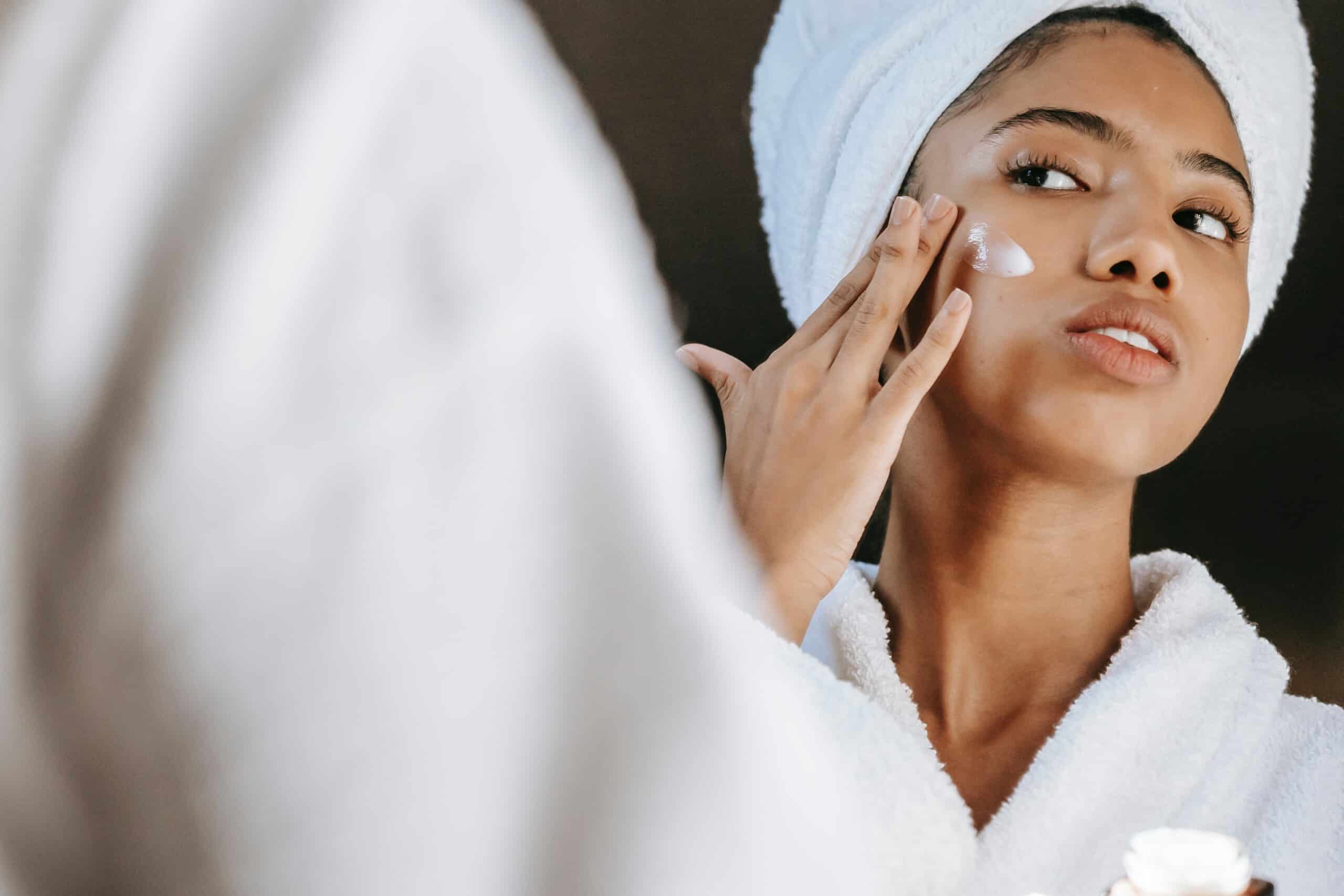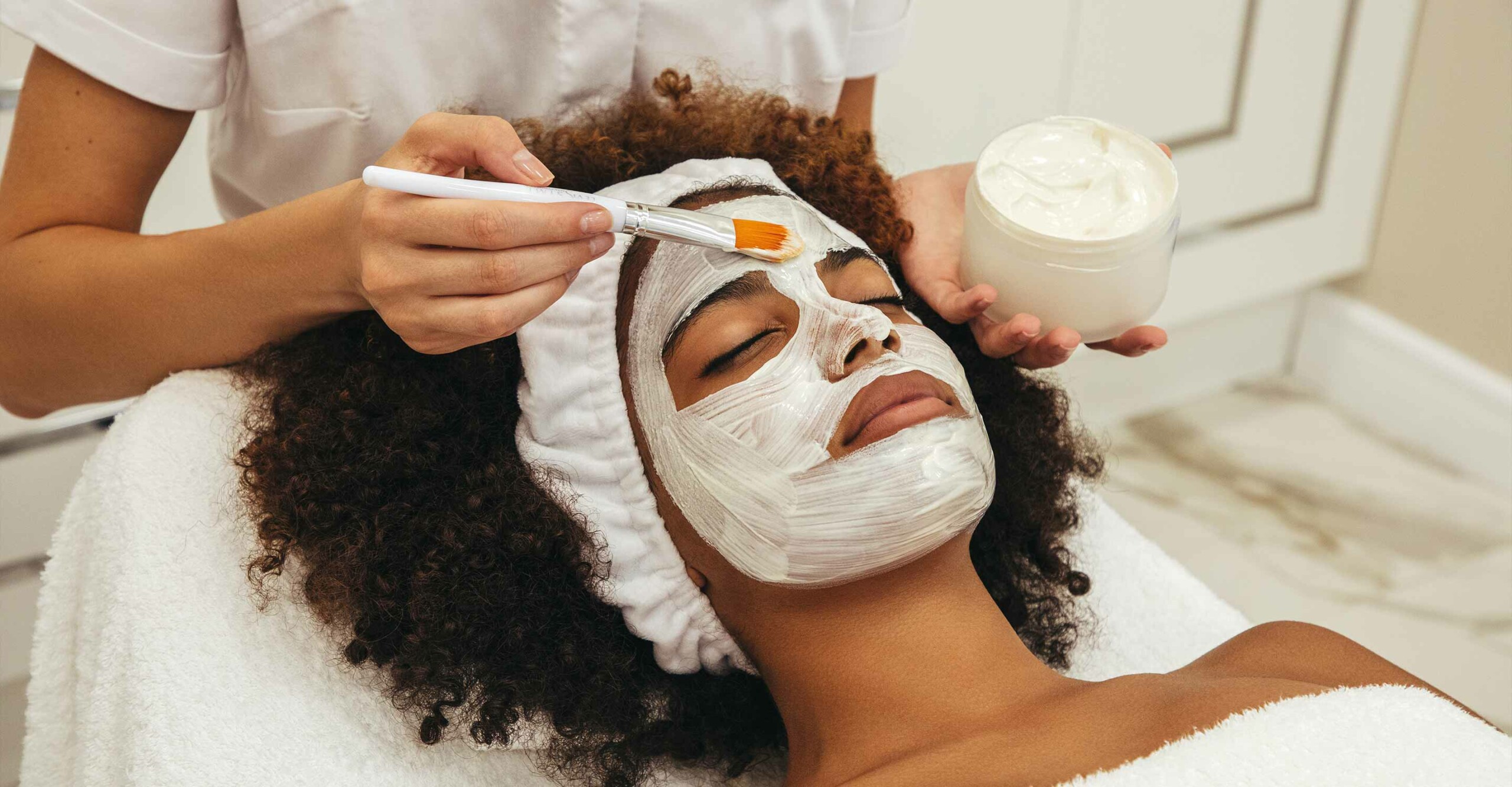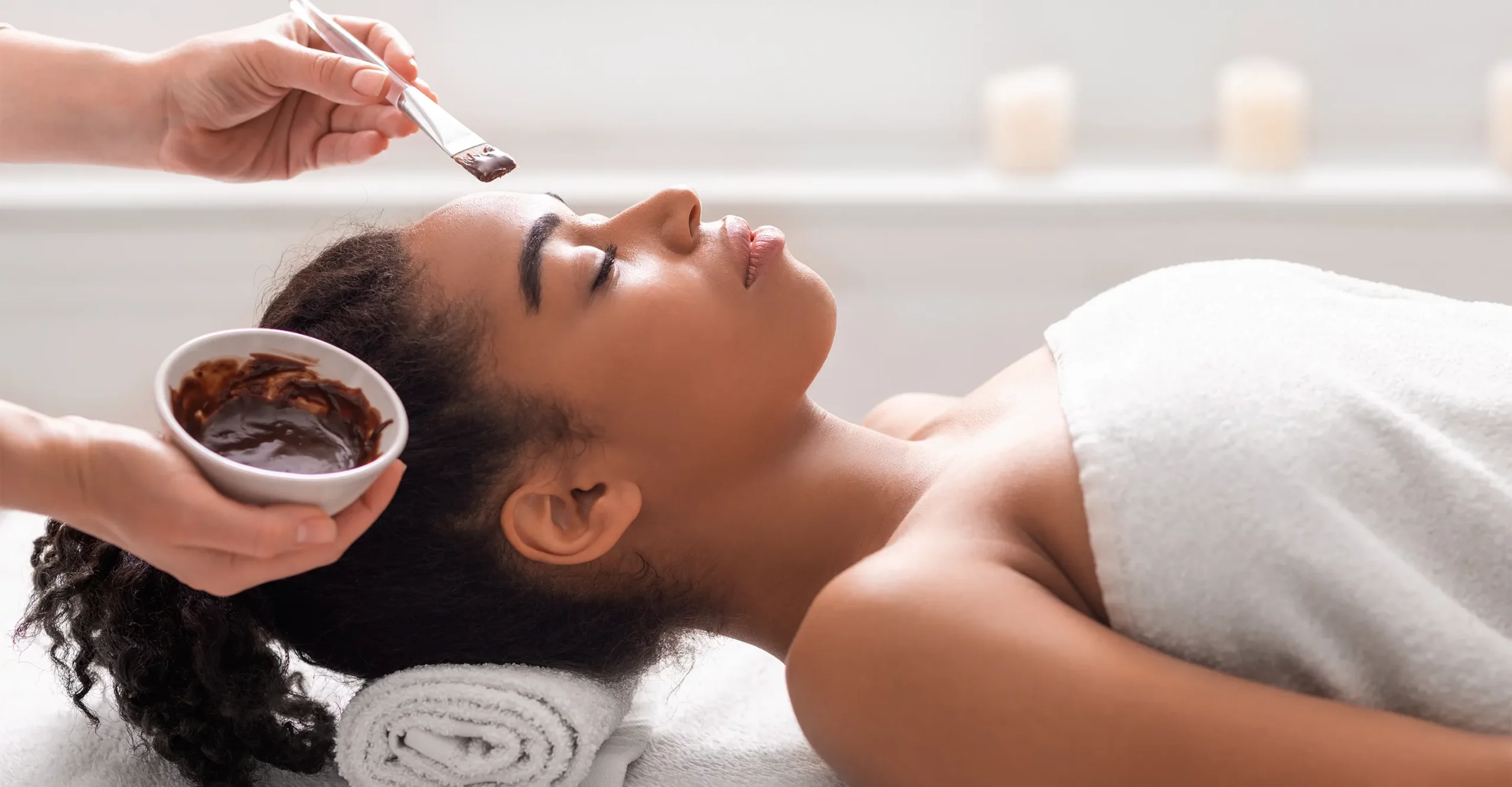7 Types of Facials & What They Do For the Skin
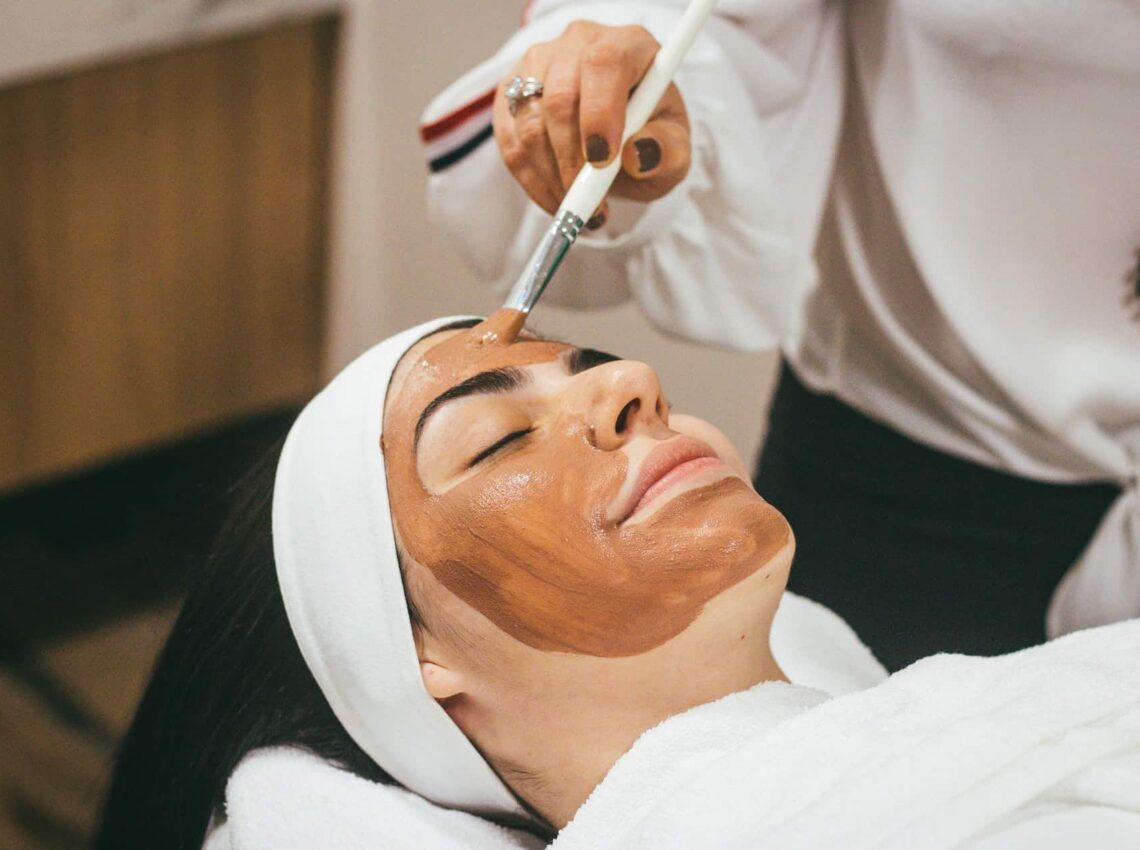
Looking for a specific facial treatment that will leave your skin glowing? If you’ve been struggling with finding the right facial treatment for your skin type or skin concern, then you’ve come to the right place.
No two people are the same, and skin concerns require different treatment methods. This guide to the seven most popular types of facials will help you better understand what each professional facial treatment entails so you find an esthetician and choose the service that perfectly fits your needs!
Microdermabrasion
Microdermabrasion is a skin-rejuvenation treatment often administered in multiple sessions over the span of several months. According to Allure, the intensity of the treatment will depend on how many microdermabrasion sessions you’ll need.¹ Microdermabrasion can be anywhere between one and six sessions on average.
What does microdermabrasion do for the skin?
Microdermabrasion benefits the facial skin by using gentle exfoliation. With the use of fine crystals, microdermabrasion gently exfoliates and rejuvenates the top layer of skin This process deeply cleanses pores and stimulates new cell growth for glowing skin. Unlike some other facial methods, microdermabrasion doesn’t strip the top layer of skin away; it simply speeds up the natural process of new skin growth.
Who is a good candidate for microdermabrasion?
Microdermabrasion is safe for all skin types, making it an excellent choice for those looking to revitalize their skin texture and remove mild pigment discrepancies. For anyone needing to remove scars or other intense discoloration, the more aggressive dermabrasion may be a more suitable treatment solution.
What results should you expect after microdermabrasion?
Immediate after-effects of microdermabrasion include several days of mild discomfort in the form of slight swelling and redness. Some people describe the immediate sensation as a mild sunburn, though the process of microdermabrasion itself is totally painless.
What are the benefits of microdermabrasion?
The benefits of microdermabrasion include softer skin, brighter and more even skin tone, and the removal of dark skin spots due to aging. Microdermabrasion is a safe and effective way to rejuvenate facial skin. But, how often should you get a facial such as microdermabrasion? The truth is, it varies by individual, yet it is important to note that it does take multiple sessions to get the full effect of this professional facial treatment.
Top three reasons people choose microdermabrasion:
1) To eliminate dark spots on the skin that form as a result of acne
2) To revitalize dull skin complexions as a method of combating the effects of aging
3) To balance uneven skin tones and create the appearance of younger, healthier skin
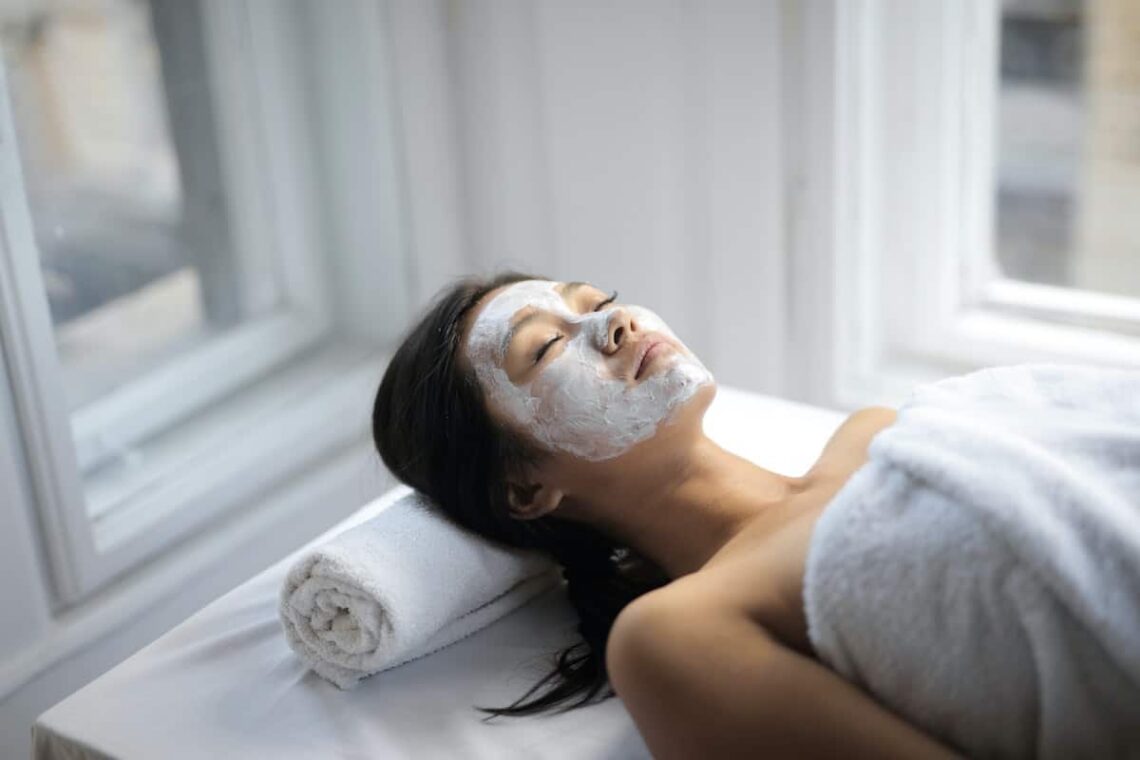
Chemical Peels
A chemical peel is a more intensive treatment that strips away layers of old, dead skin to reveal a healthier and more youthful layer of skin underneath.
What does a chemical peel do for the skin?
A chemical peel is defined as a controlled method of damaging your skin’s outer layers in order to force peeling and stimulate new skin growth.² A chemical peel essentially burns off the top layer of skin, forcing the delicate new skin underneath to come to the surface.
Who is a good candidate for a chemical peel?
Chemical peels are perfect for anyone looking to tighten and tone their skin quickly. Due to a potential complication called post-inflammatory hyperpigmentation, chemical peels are not recommended for those with darker skin tones.
What results should you expect after a chemical peel?
Much like microdermabrasion, you should expect a sunburned sensation, though the recovery from a chemical peel will be slightly more intensive as compared to your typical weekly facial at home. Additionally, you will need to apply specific skincare products to promote proper healing and keep your skin out of the sun to avoid potential permanent skin damage.
What are the benefits of a chemical peel?
A tight, fresh complexion and radiant skin are the two most common benefits of getting a chemical peel. While the process may be a bit more uncomfortable than microdermabrasion, the results are much faster. Chemical peels can be used to treat dry/flaky skin, precancerous spots, scars, and skin blotches. Deep peels can even eliminate melasma.
Top three reasons people choose chemical peels:
1) Safe and effective, despite being slightly more uncomfortable
2) It yields faster results than its facial rejuvenation counterparts like microdermabrasion
3) Eliminates wrinkles for tighter/brighter skin
Lymphatic Massage
Lymphatic massage is the process of stimulating the lymphatic system in order to promote healthy internal drainage as your body flushes out its toxins. This results in reduced inflammation of the face and surrounding tissues.
What does lymphatic massage do for the skin?
Reductions in inflammation as a result of lymphatic massage result in skin that is no longer red and puffy but rather tight and glowing. Additionally, lymphatic massage as a facial treatment can increase blood flow, helping to reduce bags and dark circles under the eyes.
Who is a good candidate for lymphatic massage? If you have wondered, “Are facials good for your skin?”, the answer is yes as long as you are following the correct protocol for your skin type and skin concerns. But, if you have ever wondered, “Are lymphatic facials good for your skin?”, the answer is absolutely! Anyone in pursuit of a less invasive facial that desires additional medical benefits is a prime candidate for this type of facial treatment. This facial massage treatment is recommended for those with delicate skin tissue or those with medical conditions that prevent them from seeking other facial treatment options.

What results should you expect after a lymphatic massage?
Expect some sinus drainage as a lymphatic facial massage can stimulate sinuses. It is this stimulation that signals the facial muscles in the face to let go of any excess fluid. Lymphatic massage should also trigger a sensation of relaxation.
What are the benefits of lymphatic drainage massage?
Lymphatic massage is beneficial for those looking to combat puffy skin, especially around the eyes. Elimination of eye bags is one of the main selling points for lymphatic massage as a facial treatment, though it is not always guaranteed.
Top three reasons people choose lymphatic massage:
1) Reduces inflammation in the face, especially in the eyes and cheeks
2) A non-invasive way to tone and revitalize facial tissue
3) Carries additional health benefits by stimulating one of the body’s major systems
Dermaplaning
Dermaplaning is the process of scraping away dead skin cells on the surface layer of the skin to reveal a softer, more even skin tone and skin texture for the face.
What does dermaplaning do for the skin?
Using a small blade that is gently scraped across the skin, dermaplaning removes old skin cells and small fine hairs to leave the skin ultra-smooth.
Who is a good candidate for dermaplaning?
Those with dull and dry skin are well suited to pursue dermaplaning as a facial treatment. Additionally, this is a great option for those who want an easy introduction to a facial treatment, but maybe skittish of a more invasive option like chemical peels.
What results should you expect after dermaplaning?
Being that it is a relatively non-invasive process, dermaplaning doesn’t have many side effects. Even though the process can cause some mild redness the day of the procedure and potentially some whiteheads in the following days, the side effects are virtually non-existent.
What are the benefits of dermaplaning?
Smooth, soft skin is the biggest benefit of dermaplaning though the added benefits of reduction in fine lines, elimination of peach fuzz, and decreased appearance of sun damage are all welcomed features of this facial treatment. The answer to the question, “How often should you get a facial?”, depends on the procedure, however, unlike other types of facials outlined in this guide, dermaplaning is a one-time procedure.
Top three reasons people choose dermaplaning:
1) Reduction in fine lines and wrinkles due to sun damage
2) Softer, smoother skin as the result of peach fuzz elimination
3) A relatively non-invasive procedure that only takes one 30-minute session to take effect
Microneedling
WebMD defines microneedling as the process of rejuvenating skin by pricking the area in need with small sterilized needles.³ Most often, this process is done with a roller wherein a serum is applied to the area first, and then the needles are used to cause small pricks in the skin.
What does microneedling do for the skin?
Very simply, microneedling promotes healthy skin by causing the body to ramp up the production of collagen and elastin. These two natural chemicals firm and tighten the skin by sealing pores and creating generally plumper skin tissue.
Plump skin tissue is not the same thing as inflammation. Whereas inflammation causes the skin to appear puffy and saggy, plump skin tissue causes the skin to appear tight and colorful.
Who is a good candidate for microneedling?
Microneedling is a great option for anyone in need of spot treatment. Whereas a chemical peel needs to be applied to the whole face, microneedling can be isolated to just a couple of spots, such as age spots or dark spots.
What results should you expect after microneedling?
Microneedling hurts a little more than some of the other treatments on this list. Many people relate the sensation to acute stinging. Remember, a little bit of bleeding is perfectly normal. After all, you are being poked with very small needles. After the treatment, you shouldn’t be surprised if the area is red and puffy, but once the swelling goes down, your skin will look amazing! Just be sure that when you are researching where to get a facial, you are choosing a place with qualified professionals with microneedling experience.
What are the benefits of microneedling?
Collagen production is the single greatest benefit of microneedling. The small pricks from the sterilized needles trigger your body’s immune system to ramp up collagen production to assist with the rehabilitation process. This inevitably leads to plumper, tighter skin cells that simultaneously brighten and tighten the outer layer of skin.
Top three reasons people choose microneedling:
1) To increase collagen production and promote healthier skin long term
2) To eliminate redness and fine lines
3) To help tighten and close pores
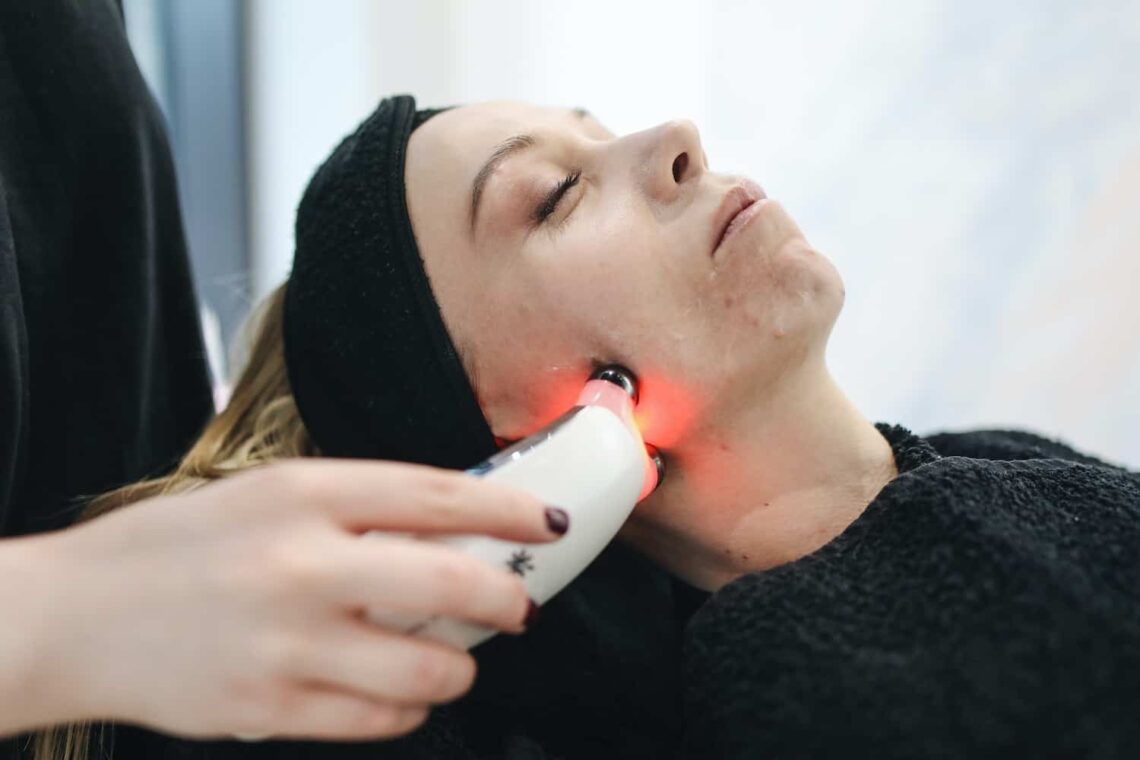
LED Light Therapy
LED Light Therapy is considered to be one of the safest skin treatments of the modern age. The red and blue lights used in the two different types of LED light therapy are not harmful UV rays, meaning that this particular facial type is safe for regular use.
What does LED light therapy do for the skin?
LED therapy works by using red or blue lights to penetrate different levels of the derma, subsequently stimulating two very distinctive categories of skin cells.
Red light LED treatment triggers fibroblasts, which are skin cells responsible for increasing collagen production to combat scarring and improve skin elasticity.
Alternatively, blue light LED treatment prevents overactive sebaceous glands from producing excessive amounts of oil to help with oily skin and acne.
Who is a good candidate for LED light therapy?
Anyone can benefit from LED light therapy, but those who struggle with scarring, overactive acne, or oily skin can especially benefit from light therapy facial treatments. The experts at WeHeartThis say that while many other facial treatments chemically alter the skin, LED light therapy simply stimulates the cells you already have and is therefore safe for all skin tones.⁴
What results should you expect after LED light therapy?
LED light therapy, while proven to be safe and effective, is a long-term approach to skin health. While there are not any immediate negative after-effects, the benefits take some time to become noticeable. If you are interested in starting your skin journey using LED light therapy, it is essential to find a highly skilled aesthetician to perform this treatment for you on a recurring basis. Whether you are looking for the best esthetician in San Diego or the best facialist in Houston, finding a professional who can monitor your skin’s progress between treatments will benefit you in the long run.
What are the benefits of LED light therapy?
Aside from the safety and effectiveness of LED light therapy, it can also be done at home. The DIY LED light treatments aren’t quite as effective as those used by professionals, but this therapy is available as an at-home treatment for those willing to spend money on an LED light therapy mask.
Top three reasons people choose LED light Therapy:
1) It is a safe alternative to skin treatment, especially for those with oily skin
2) It is proven to stimulate collagen growth in order to prevent scarring
3) It can be safely and easily performed at home
Brightening and Oxygenating Facials
Oxygen facials, you might expect, are fantastic for producing bright, tight, younger-looking skin. The process of cleansing the skin with pressurized oxygen carries the same principle as a microdermabrasion facial but uses oxygen instead of crystals.
What do brightening and oxygenating facials do for the skin?
Oxygen facials promote brighter, healthier skin by cleansing the surface of the skin with highly pressurized oxygen. SkinKraft tells readers that the skin is sterilized and deeply cleansed, after which the esthetician uses a wand to thoroughly exfoliate the face with pressurized air.⁵ This deep exfoliation creates younger, tighter-looking skin and helps keep skin healthy long term by promoting collagen production underneath the surface of the derma.
Who is a good candidate for brightening and oxygenating facials?
Anyone who desires the kind of deep exfoliation of microdermabrasion or chemical peels without the recovery time should seriously consider an oxygen facial as an alternative. It is safe for all skin types and skin tones, though it can be on the pricier end for facials.
What results should you expect after a brightening and oxygenating facial?
Pressurized air is no picnic, so you should be prepared for some discomfort during the process. Once the facial is administered, the after-effects are very minimal, and there is no healing that needs to take place. The most common side effect is a numb tingling sensation during the procedure due to the air being blown across the surface of the skin, but this dissipates once the facial is over.
What are the benefits of brightening and oxygenating facials?
Oxygen facials areas, you might expect, are fantastic for producing bright, tight, younger-looking skin. The process of cleansing the skin with pressurized oxygen carries the same principle as a microdermabrasion facial but uses oxygen instead of crystals.
Top reasons people choose brightening and oxygenating facials:
1) To improve blood circulation in the face
2) To reduce and eliminate fine lines and wrinkles
3) To improve collagen production for plump, younger-looking skin
While these seven are some of the most popular facial options, there are all sorts of facials that help promote clean, healthy skin.
Facials aren’t just a cosmetic obligation. They’re a great way to spend the day relaxing while simultaneously rejuvenating your skin. Now that you know a little more about these popular facial treatments, it’s time to find a facial specialist in your area.
Get the glowing complexion you’ve been searching for and book an appointment using StyleSeat’s online booking app. Your day of pampering and deep pore cleansing is just a few clicks away, so book now for the perfect skin you feel your best in!
Sources:
